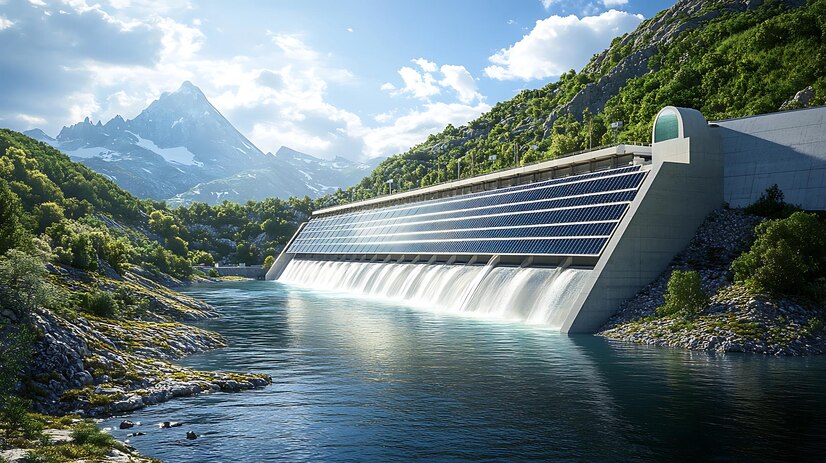In the journey toward a sustainable future, green energy hydropower stands out as one of the most reliable and eco-friendly sources of renewable energy. By harnessing the natural flow of water, hydropower generates clean energy, helping to reduce our reliance on fossil fuels and decrease greenhouse gas emissions. This blog explores the role of hydropower in the renewable energy sector, its benefits, environmental impact, and future potential.
What is Green Energy Hydropower?
Hydropower, often referred to as hydroelectric power, is a form of energy generated by converting flowing water into electricity. As one of the oldest forms of renewable energy, hydropower has been used for centuries in various forms, from powering grain mills to producing electricity on a large scale. Today, green energy hydropower has become a major player in the global renewable energy market, accounting for around 16% of the world’s electricity production.
The process involves building a dam or reservoir to control water flow. When released, the water spins turbines connected to generators, creating electricity. This process is both renewable and environmentally friendly, as it uses a natural, replenishing resource: water.
Benefits of Green Energy Hydropower
- Sustainable and Renewable: Hydropower relies on the water cycle, which is continually renewed by rainfall, making it an almost inexhaustible source of power. Unlike fossil fuels, water doesn’t run out, which means hydropower can provide a consistent, long-term solution for electricity generation.
- Clean Energy: Hydropower doesn’t emit pollutants, making it a clean alternative to coal or oil. This clean energy solution helps to reduce air pollution and contributes significantly to global goals of reducing greenhouse gas emissions.
- Reliable and Efficient: Hydropower plants can quickly adapt to fluctuations in electricity demand, making them highly responsive compared to other renewable energy sources. Additionally, hydropower facilities typically have long lifespans, with many plants operating efficiently for over 50 years with proper maintenance.
- Economic Growth and Job Creation: Hydropower projects stimulate economic development by creating jobs in construction, maintenance, and operations. Communities near hydropower plants also benefit from improved infrastructure and water management.
- Supports Grid Stability: Hydropower facilities can provide backup power during electricity outages or peak demand times, adding stability to the energy grid. This reliability is essential as the world increasingly shifts to renewable energy sources, which can be more intermittent, such as wind and solar.
Environmental Impact of Hydropower
While green energy hydropower is sustainable and clean, it’s essential to recognize and address its environmental impacts. Building large dams and reservoirs can disrupt local ecosystems, affecting fish migration, altering water quality, and impacting biodiversity. However, innovations in hydropower technology aim to minimize these issues. For example, small-scale and run-of-river hydropower systems reduce the need for large reservoirs and limit their environmental footprint.
Additionally, environmental assessments and policies are increasingly incorporated into hydropower projects to protect local habitats and species. These advancements show promise for making hydropower even more sustainable and eco-friendly.
The Future of Green Energy Hydropower
As the world intensifies its commitment to fighting climate change, hydropower remains a crucial part of the renewable energy mix. The International Energy Agency (IEA) predicts an increase in global hydropower capacity in the coming decades, driven by both large-scale projects and small-scale hydropower systems in developing regions.
Furthermore, modern innovations in turbine technology and improvements in water flow management are making hydropower more adaptable and efficient. This evolving technology ensures that green energy hydropower will continue to be a competitive, reliable, and environmentally friendly energy source in the years to come.
Hydropower is also expected to complement other renewable energies, like wind and solar, by providing a stable backup power source. Together, these renewable solutions can create a more resilient energy grid, allowing for a smoother transition away from fossil fuels.
Green energy hydropower offers a powerful solution to the world’s renewable energy needs. With its sustainable, clean, and reliable characteristics, hydropower not only generates electricity but also contributes to environmental preservation and economic growth. By investing in hydropower and advancing the technology to reduce its environmental impact, we are setting the foundation for a more sustainable and energy-efficient world.
In summary, green energy hydropower holds immense potential to lead the transition to clean energy. As we move forward, this form of renewable energy will play a vital role in creating a balanced and sustainable global energy system, paving the way for a cleaner, greener future for all.




